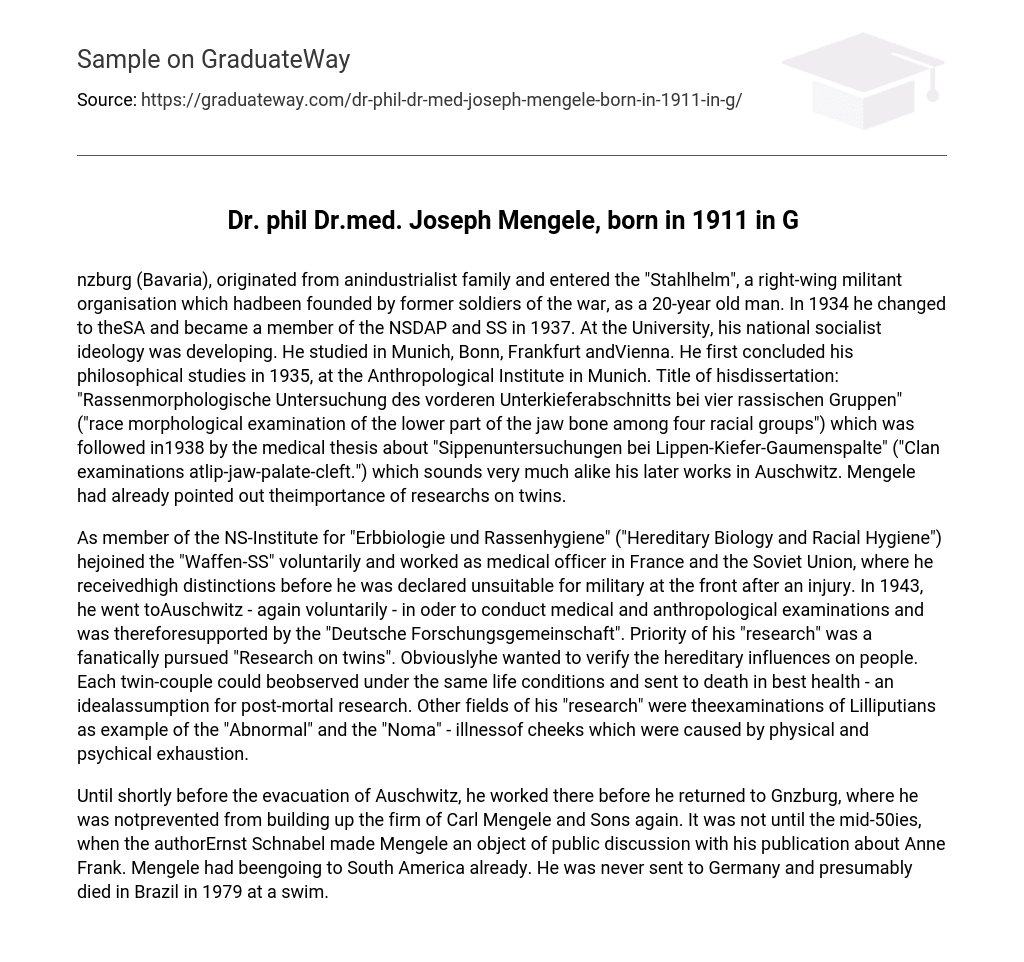nzburg (Bavaria), originated from anindustrialist family and entered the “Stahlhelm”, a right-wing militant organisation which hadbeen founded by former soldiers of the war, as a 20-year old man. In 1934 he changed to theSA and became a member of the NSDAP and SS in 1937. At the University, his national socialist ideology was developing. He studied in Munich, Bonn, Frankfurt andVienna. He first concluded his philosophical studies in 1935, at the Anthropological Institute in Munich. Title of hisdissertation: “Rassenmorphologische Untersuchung des vorderen Unterkieferabschnitts bei vier rassischen Gruppen”(“race morphological examination of the lower part of the jaw bone among four racial groups”) which was followed in1938 by the medical thesis about “Sippenuntersuchungen bei Lippen-Kiefer-Gaumenspalte” (“Clan examinations atlip-jaw-palate-cleft.”) which sounds very much alike his later works in Auschwitz. Mengele had already pointed out theimportance of researchs on twins.
As member of the NS-Institute for “Erbbiologie und Rassenhygiene” (“Hereditary Biology and Racial Hygiene”) hejoined the “Waffen-SS” voluntarily and worked as medical officer in France and the Soviet Union, where he receivedhigh distinctions before he was declared unsuitable for military at the front after an injury. In 1943, he went toAuschwitz – again voluntarily – in oder to conduct medical and anthropological examinations and was thereforesupported by the “Deutsche Forschungsgemeinschaft”. Priority of his “research” was a fanatically pursued “Research on twins”. Obviouslyhe wanted to verify the hereditary influences on people. Each twin-couple could beobserved under the same life conditions and sent to death in best health – an idealassumption for post-mortal research. Other fields of his “research” were theexaminations of Lilliputians as example of the “Abnormal” and the “Noma” – illnessof cheeks which were caused by physical and psychical exhaustion.
Until shortly before the evacuation of Auschwitz, he worked there before he returned to Gnzburg, where he was notprevented from building up the firm of Carl Mengele and Sons again. It was not until the mid-50ies, when the authorErnst Schnabel made Mengele an object of public discussion with his publication about Anne Frank. Mengele had beengoing to South America already. He was never sent to Germany and presumably died in Brazil in 1979 at a swim.





